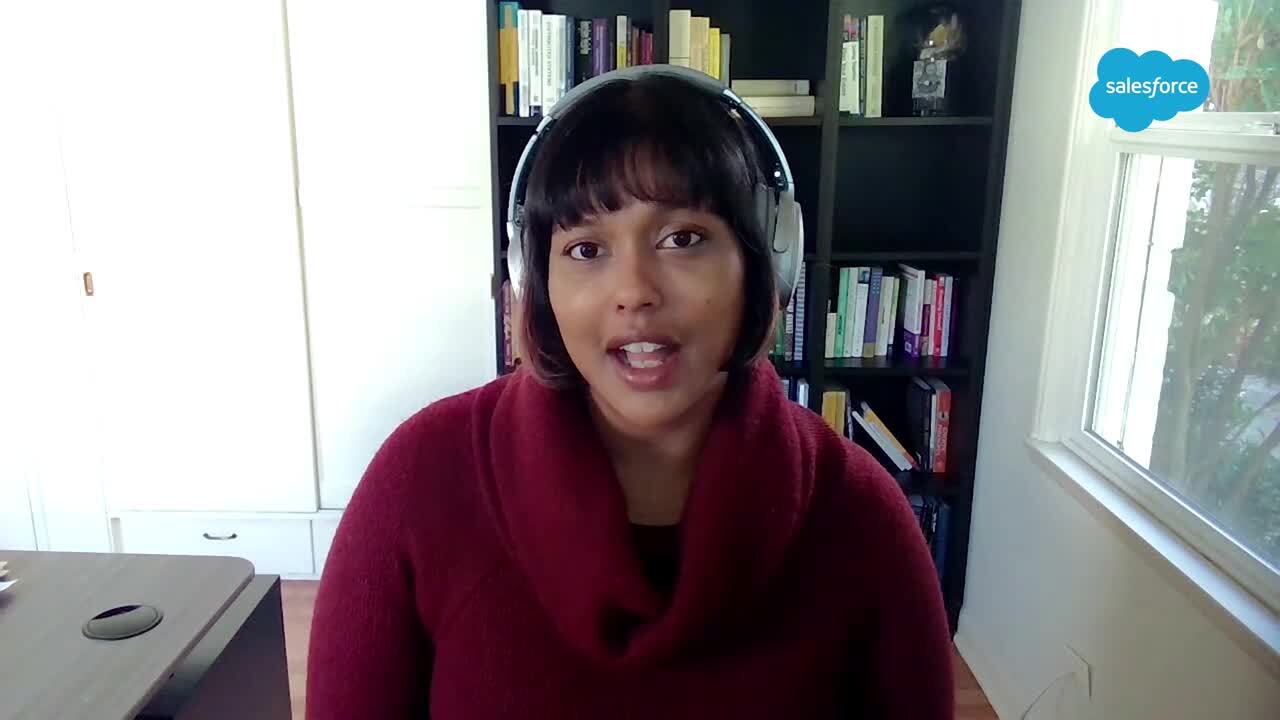
Written by Prianna Ahsan and Scott Nyberg.
In our “Engineering Energizers” Q&A series, we examine the life experiences and career paths that have shaped Salesforce engineering leaders. Meet Prianna Ahsan, a software engineering architect for MuleSoft’s production engineering team. Prianna and her team enhance developer experiences by supporting cutting-edge projects, including the migration of MuleSoft onto Salesforce’s global public cloud platform, Hyperforce — enabling MuleSoft to be offered to customers worldwide.
Why did you decide to join Salesforce?
While many companies — including Salesforce — pride themselves on their innovation, Salesforce’s values served as the key differentiator for me. I admired the company’s prioritization of equality and ethics and I respected the leadership’s passion for solving the climate crisis, helping to leave the world a better place than it is today.
Prianna explains how Salesforce’s values inspire her.
How would you describe your current team and role?
I am a software engineering architect on MuleSoft’s production engineering team, which includes remote members from the U.S. and mostly Argentina. We build out the deployment infrastructure and also the runtime infrastructure that powers MuleSoft services. Ultimately, we are an enablement organization that focuses on enhancing developer experience and innovating simple solutions that are scalable, operable, and lead to repeatable practices — empowering developers to develop as they see fit.
Diving a level deeper, we serve many customers and getting MuleSoft’s platform onboarded to Hyperforce environments around the world represents a massive effort. Ultimately, our work front-loads future work that Salesforce will face with migrating other acquisitions into those environments. The more we can prove out with MuleSoft now, the less work Salesforce will face in the coming years.
How are we doing this? My team is onboarding MuleSoft in a way that is translatable to an automated environment build process— enabling us to rapidly replicate the onboarding for multiple environments.
What about your job excites you the most?
The most exciting thing for me are the difficult challenges that my team faces, together with the need to create simple, scalable solutions. But the real upside is that the products that we deliver directly impacts other developers’ job satisfaction. What do I mean by that? We are a development enablement organization. Engineers cannot deploy their code without us. Engineers who cannot deploy their code are unhappy. Engineers who must jump through hoops to write software are unhappy. It is important to note that our customers are other Salesforce engineers. Consequently, it is very easy for me to relate to my customers and empathize with them.

Prianna explores the top engineering challenges that keep her up at night.
You spend a lot of time mentoring other women engineers here at Salesforce. What guidance do you offer them?
When I sit down with a mentee, I ask them to articulate their activities so they can be properly rewarded for them. I ask about their technical achievements and also about their day to day. We will go through their Slack history and determine how they spend their time. That helps us construct a narrative of their contributions, which they can use to inform their progression when it comes to promotion time.
Together we map how they spend their time to Salesforce’s values and expectations for their current level and for a future level. And much of the time, the path they choose depends on if they want to be an independent contributor or if they want to be an engineering manager.
How do you find your mentees? What does an initial conversation with a mentee look like?
Their managers usually come to me. For example, a director or a VP will reach out and say, “Hey, I have a woman engineer here who is really great and I think she could benefit from your mentorship.”
When I first connect with the mentee, she explains her goals and maybe even frustrations, and I coach her through it, letting her know that I relate and that I have been where she is, and then give her some tailored advice. There are also times where I do not relate, because I have not been there. But that is ok because what people need is somebody to hear them out and help them. I think people need to establish a narrative for their own work so they can chart a fulfilling career path.
What do you like to do during your free time?
I have many hobbies — I love rock climbing. I have been climbing for 11 years and want to climb Mount Whitney, which is the tallest mountain in the continental U.S. and is a challenging ascent — 15,000 feet!

I have also been sailing for about six years. I participate in One Design racing, where competing teams race in identical 30-foot or 39-foot sailboats during quick regattas. As a crew member, I work the helm, the jibs and the mainsheet, which means I am responsible for the main engine of the sailboat. Basically, everyone does whatever it takes during these events to win.

Learn more
- To learn more about Prianna’s MuleSoft team and their secret for radically reducing workloads, read her blog.
- Check out our Technology and Product teams to learn how you can get involved.
- Stay connected – join our Talent Community!






